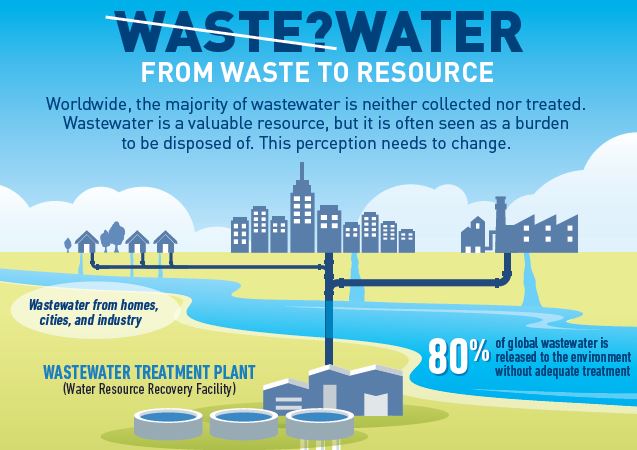
Chemicals are used during wastewater treatment in an array of processes to expedite disinfection. These chemical processes, which induce chemical reactions, are called chemical unit processes and are used alongside biological and physical cleaning processes to achieve various water standards. Specialized chemicals such as chlorine, hydrogen peroxide, sodium chlorite, and sodium hypochlorite (bleach) act as agents that disinfect, sanitize, and assist in the purification of wastewater at treatment facilities. There are several distinct chemical unit processes, including chemical coagulation, chemical precipitation, chemical oxidation, and advanced oxidation, ion exchange, and chemical neutralization and stabilization, which can be applied to wastewater during cleaning.
Chemical Precipitation
Chemical precipitation is the most common method for removing dissolved metals from wastewater solution containing toxic metals. To convert the dissolved metals into solid particle form, a precipitation reagent is added to the mixture. A chemical reaction, triggered by the reagent, causes the dissolved metals to form solid particles. Filtration can then be used to remove the particles from the mixture. How well the process works is dependent upon the kind of metal present, the concentration of the metal, and the kind of reagent used. In hydroxide precipitation, a commonly used chemical precipitation process, calcium or sodium hydroxide is used as the reagent to create solid metal hydroxides. However, it can be difficult to create hydroxides from dissolved metal particles in wastewater because many wastewater solutions contain mixed metals.
Chemical Coagulation
This chemical process involves destabilizing wastewater particles so that they aggregate during chemical flocculation. Fine solid particles dispersed in wastewater carry negative electric surface charges (in their normal stable state), which prevent them from forming larger groups and settling. Chemical coagulation destabilizes these particles by introducing positively charged coagulants that then reduce the negative particles’ charge. Once the charge is reduced, the particles freely form larger groups. Next, an anionic flocculant is introduced to the mixture. Because the flocculant reacts against the positively charged mixture, it either neutralizes the particle groups or creates bridges between them to bind the particles into larger groups. After larger particle groups are formed, sedimentation can be used to remove the particles from the mixture.
Chemical Oxidation and Advanced Oxidation
With the introduction of an oxidizing agent during chemical oxidation, electrons move from the oxidant to the pollutants in wastewater. The pollutants then undergo structural modification, becoming less destructive compounds. Alkaline chlorination uses chlorine as an oxidant against cyanide. However, alkaline chlorination as a chemical oxidation process can lead to the creation of toxic chlorinated compounds, and additional steps may be required. Advanced oxidation can help remove any organic compounds that are produced as a byproduct of chemical oxidation, through processes such as steam stripping, air stripping, or activated carbon adsorption.
Ion Exchange
When water is too hard, it is difficult to use to clean and often leaves a grey residue. (This is why clothing washed in hard water often retains a dingy tint.) An ion exchange process, similar to the reverse osmosis process, can be used to soften the water. Calcium and magnesium are common ions that lead to water hardness. To soften the water, positively charged sodium ions are introduced in the form of dissolved sodium chloride salt or brine. Hard calcium and magnesium ions exchange places with sodium ions, and free sodium ions are simply released in the water. However, after softening a large amount of water, the softening solution may fill with excess calcium and magnesium ions, requiring the solution to be recharged with sodium ions.
Chemical Stabilization
This process works in a similar fashion as chemical oxidation. Sludge is treated with a large amount of a given oxidant, such as chlorine. The introduction of the oxidant slows down the rate of biological growth within the sludge and also helps deodorize the mixture. The water is then removed from the sludge. Hydrogen peroxide can also be used as an oxidant and may be a more cost-effective choice.

